A Healthy Blaze
Masonry Stoves Conduct Effective Warmth
Sarah Rohr
Special Contributor
Photos courtesy of TempleFire
Mouse over photos for captions
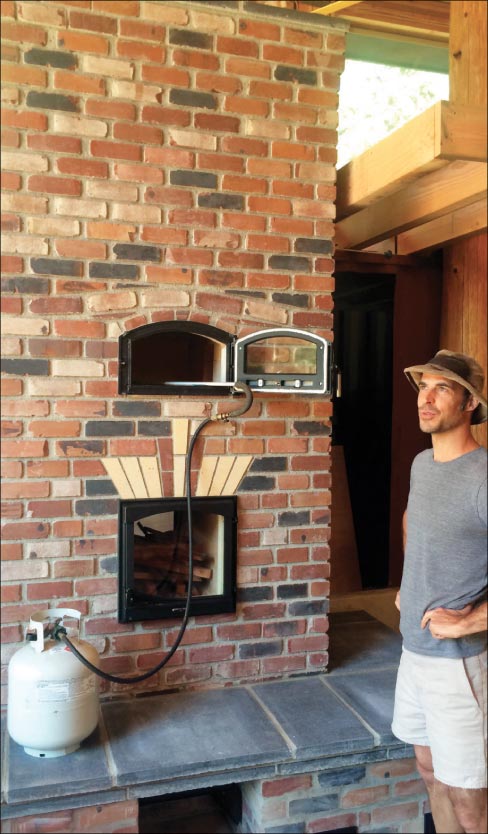 Winter has officially begun and some parts of the country have already seen a foot or more of snow piling up.
Winter has officially begun and some parts of the country have already seen a foot or more of snow piling up.
With below-normal temperature expected, even little-used indoor heating systems are coming out of hibernation and starting to flood our homes, schools, businesses and all manner of gathering places with generous warmth.
How do you get warmed up in the cooler months?
We live in a time when we have a variety of heating system options with varying degrees of fiscal and experiential effectiveness from gas, coal, natural gas, oil, electric and wood fire sources.
Masonry stoves could be cast as heirlooms or relics of old since they have been in use for thousands of years, yet this depiction would not take into account the newfound popularity of this increasingly popular heating method.
Two signals that interest in construction of masonry stoves is on the rise are the new Environmental Protection Agency standards proposal that came out in January 2014 concerning masonry stoves as well as the increasing popularity of training courses on building masonry stoves through the Masonry Heater Association of North America.
Why has popular curiosity been piqued? In a time when heating bills are costing a small fortune and the issue of environmental sustainability is becoming more and more relevant, people are increasingly interested in looking for more creative and workable solutions.
According to EIA (U.S. Energy Information Administration), the folks who create and distribute the yearly forecast of heating costs for homeowners across the country, as of this month, electric heat is currently taking the lead on the lion’s share of the energy market.
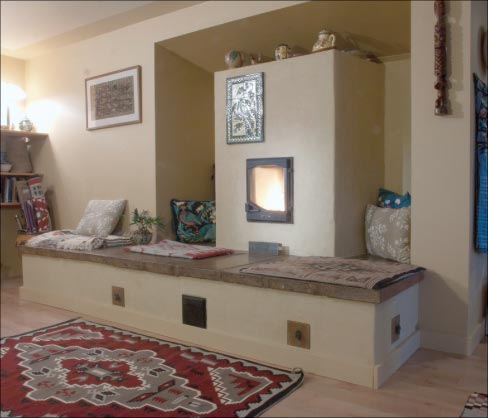 Those of us who utilize electric heat may be attuned to the temperature fluctuations that take place during the day with this source as well as the drying effects on sinus and skin that are results of the type of heat it provides.
Those of us who utilize electric heat may be attuned to the temperature fluctuations that take place during the day with this source as well as the drying effects on sinus and skin that are results of the type of heat it provides.
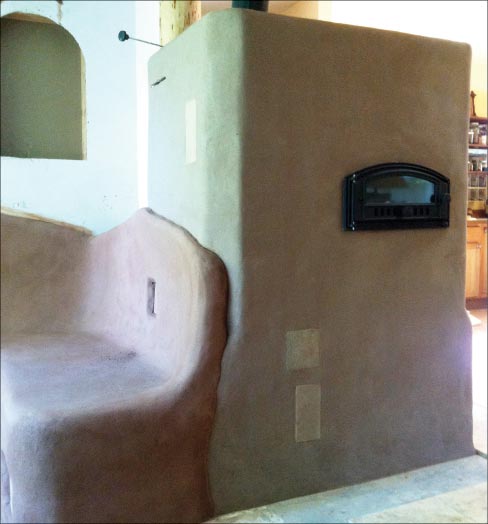 Unlike electric heaters, masonry stoves provide a radiant heat source that evenly heats a home or workplace, leaving the air moist and warm. In addition to the generous warmth they provide, their construction can yield a multi-functioning product, with an aesthetic that can match the owners taste from the artistic to the modern.
Unlike electric heaters, masonry stoves provide a radiant heat source that evenly heats a home or workplace, leaving the air moist and warm. In addition to the generous warmth they provide, their construction can yield a multi-functioning product, with an aesthetic that can match the owners taste from the artistic to the modern.
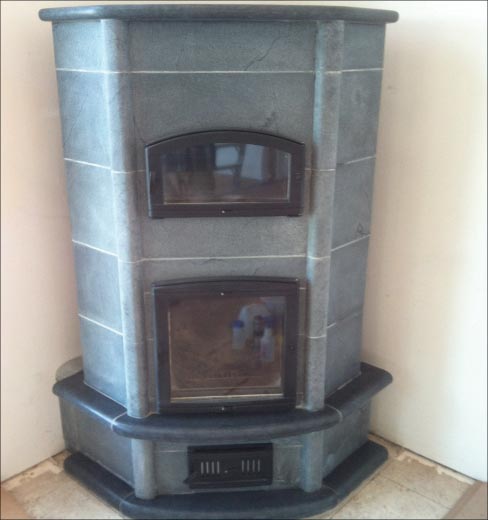 It is important to note that these stoves are not as instantly gratifying as more contemporary forms of heating, as it takes planning and foresight to generate the heat. This is because while a masonry stove is a fast burning system that produces a roaring fire (the likes of which you might not believe unless you were to see one of these stoves in action), it generally can take up to five hours to get the heat evenly going. Once this is achieved, however, the comfort and steady warmth can often be maintained for up to 24 hours, from one morning until the next. How is it possible to maintain such a steady warmth for that duration, you wonder? Well, let’s ask an expert.
It is important to note that these stoves are not as instantly gratifying as more contemporary forms of heating, as it takes planning and foresight to generate the heat. This is because while a masonry stove is a fast burning system that produces a roaring fire (the likes of which you might not believe unless you were to see one of these stoves in action), it generally can take up to five hours to get the heat evenly going. Once this is achieved, however, the comfort and steady warmth can often be maintained for up to 24 hours, from one morning until the next. How is it possible to maintain such a steady warmth for that duration, you wonder? Well, let’s ask an expert.
Let’s Ask an Expert
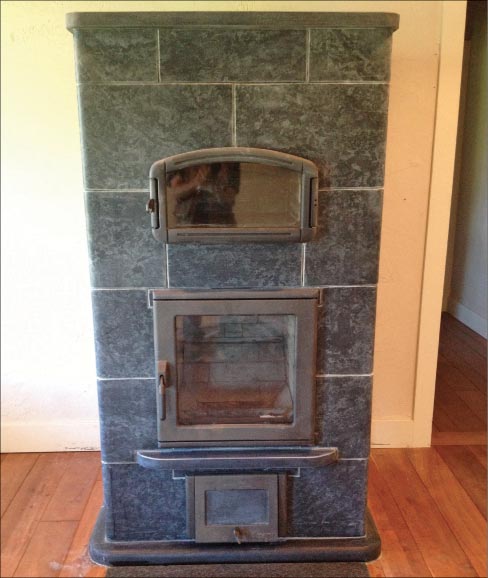 Jason Temple is a mason residing in Port Townsend, Washington, whose focus and passion is masonry stove installation. Temple was originally trained as an engineer and says that he evaluates all of his projects through that lens.
Jason Temple is a mason residing in Port Townsend, Washington, whose focus and passion is masonry stove installation. Temple was originally trained as an engineer and says that he evaluates all of his projects through that lens.
Over the years, a growing interest in natural building lead to his study and the construction of many projects using earthen materials, including cob, straw bale and masonry.
In 2011, after attending a class by Jerry Frisch through the Masonry Association of North America, Temple found his passion and started TempleFire, a company dedicated to promoting and installing high-quality, sustainable wood burning masonry stoves for residential and business clients. He is a current member of MANA and regularly attends their annual conferences to grow his knowledge base and expand his skillset.
While Temple’s preferred way of heating a home is through the sun, if that is not possible his second favorite way to generate and conduct heat is by utilizing wood, which he says “is a form of solar energy as it originated from the sun, rain and soil. Masonry heaters allow us to use that resource in a most efficient and elegant way.”
The reason for this, according to Temple is that, the majority of the heat released by a masonry heater is in the form of radiant heat. “Like sunlight, it travels in a straight line, and warms solid objects directly. A commonly shared example of this radiant heat is a cool but sunny autumn day when one feels the strong warmth of sunlight on one’s skin despite the cool temperatures.”
Ideal Materials
When broaching the topic of soapstone, Jason mentioned that “soapstone is pretty interesting in that it has an amazing ability to store, transfer and radiate heat. From a thermal performance standpoint, it is an ideal material.
“People tend to either love it or hate it, not everyone loves the way it looks and a lot of soapstone in this country is imported. Regardless of whether it’s domestic or imported it’s expensive and that’s a big factor in whether or not a heater is going to be crafted in soapstone.
“Because the material is so expensive, a lot of attention needs to be given to minimizing waste. Therefore I only use this material for very specific areas when the budget allows, which is generally in high performance heaters.
“My working knowledge of soapstone came from my work assisting Steve Cohan of Hot Rock Masonry in the construction of masonry heaters. Steve has worked extensively with soapstone as he used to reside in the Blue Ridge Mountains of Virginia where soapstone is abundant. Jason mentioned all of those who taught him their trade with fondness and deep respect.”
Science Geeks Get Ready
“When heating a conventional wood stove,” Temple continues, “hot air rises, often resulting in an overheated loft or second story.” In contrast, “The radiant heat of a masonry heater is unaffected by gravity and warms a home uniformly from floor to ceiling. The radiant heat stops where it encounters a surface, like that of your warm-blooded skin, a countertop or a wall… That is why in a house conducting this kind of heat, it could be 65 degrees inside and people will be wearing shorts and tee-shirts.”
Masonry stoves can be completely tailored to the client’s need based on the BTU heat requirements of their homes or workplaces as well their aesthetic preferences.
Aesthetically speaking, these stove can run the gamut from simple and unadorned to very ornate by incorporating furniture and benches, ovens and cooktops all as part of the unit itself. This can yield an artisanal masterpiece as well as high functioning conductor of heat.
A number of TempleFire’s clients have hired Jason for this very reason, desiring a source of heat that can also serve as an oven to bake bread, benches which carry the heat of the stove through them to warm those sitting, or stovetops to cook upon, utilizing the already present heat for a second or third purpose.
Also, by using cob or another natural material with the masonry stove, it is possible to create a unique, one of a kind work of aesthetic beauty as well as a pragmatic and functionally useful tool for generating warmth.
Are They Really that Sustainable?
According to Temple, “Masonry heaters use the most abundant and least expensive renewable resource - wood. They utilize wood heat in an efficient way that does not waste energy or pollute the environment. This is because when the fire goes out, they continue to conduct the heat which has been stored in the thermal mass of the heater. Also, they possess a superb efficiency of combustion.
“If the wood used to fuel a masonry heater is produced and harvested sustainably, then it can be said that masonry heaters are carbon neutral. Because masonry heaters are the most efficient way to burn wood, they can play an important role in increasing a household’s, or a community’s, sustainability.”
Temple goes on to share his bigger vision on his website. “Increased use of masonry heaters support local energy resources and local economies, and further promote sustainable woodland management and practices.
“When we fuel a craftsman-built masonry heater with locally sourced energy, managed by local forest stewards, and harvested by local woodcutters whom we come to know, we increase our connection to the land, strengthen our community and deepen our own sense of place.”
While it could take time for this vision to become a reality, Jason is already out there promoting this new, yet ancient form of heating along with a whole lot of other folks working to make more beautiful and sustainable viable heating systems.
In this day and age when environmental responsibility is becoming more pertinent, we have the opportunity to have our choices reflect our values.
Hearing Jason Temple speak about his desire to make the world a more sustainable place one stove at a time, I also hear the voices of this generation and generations to come asking us to be wise with our purchases.
As the old adage goes, “we cannot legislate morality,” but we can vote with our dollars, paying for the world we want to see, which is often a more costly investment if we vote for quality and craftsmanship, and the labors of hands crafting carefully-made things we will love and live with for a very long time.
As we warm our bones this autumn and winter to come, may the fires that burn bright before us also bring the spark of beauty into the hearts of our homes.
To see Jason Temple’s work- visit him at his online venue - www.Templefire.net